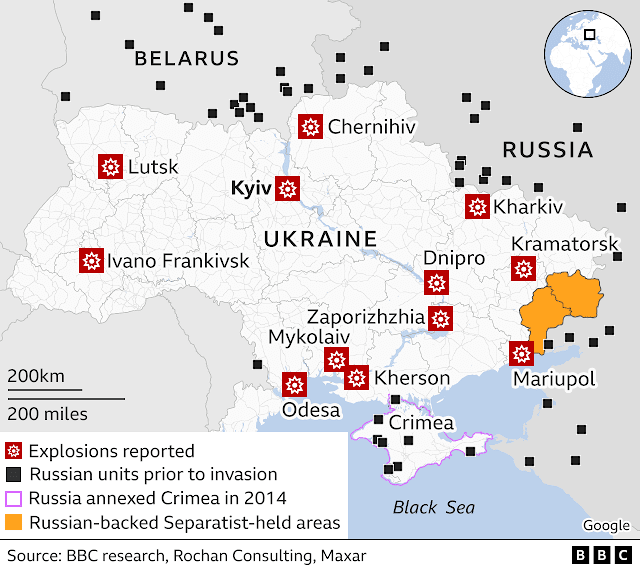ANALYSIS: Combined Airpower in the First Gulf War
In todays article we take a departure from previous formats, to take a look at the First Gulf War. There is a particular emphasis on the air and ground combinations that were deployed successfully by the coalition during the conflict, which initiated a new period of thought, particularly on the doctrine of airpower. In light of the important air campaigns ongoing in Ukraine (as well as seen in other conflicts such as Nagorno-Karabakh) it seems prudent to revisit one of the key military conflicts of the 1990s.
The Aerial Campaign
The First Gulf War exhibited a plethora of innovations, chief among them was the technologically driven coalition air campaign, which was a decisive success. A feint at the opening of the conflict obliged Iraq to activate its air defence system, which was promptly incapacitated by electronic attacks. With Iraqi air defence negligible, the coalition was granted tactical surprise and air attacks began on ground forces, airbases and infrastructure from day one. Desert Storm began with an explosion of coalition activity and this momentum was maintained, as they averaged roughly 2000 sorties a day. Herein, the previously well-performing Iraqi air force of the Iran-Iraq War was decimated by Nighthawks, A-10 Thunderbolts and F16s. Of Iraq’s 594 aircraft shelters, 375 were destroyed along with 141 aircraft. On the ground, over 100 tanks were estimated to be destroyed a day. Though air to air combat was rare, 35 Iraqi jets were lost in this manner, with zero coalition losses. The culmination of such an overwhelming loss of air superiority resulted in some Iraqi pilots fleeing to Iran, where they were subsequently impounded. An unimpeded success was mitigated by bad weather and the hunt for Iraqi SCUDs, which had been launched on Saudi-Arabia and Israel, but even these delays merely added an extra 9 days to the planned 30-day air campaign. The success of coalition strategy resulted in Hussein’s abandonment of attritional defensive tactics, in turn invading Saudi Arabia to engage the coalition. Yet when Hussein attacked at Khafji, the Iraqi forces were obliterated in the open terrain by allied close air support, suffering over 100 mechanised losses to the coalition’s ten. The air campaign had thus achieved its own decisive victory, while facilitating the achievement of a further decisive victory on the ground.
The Ground Campaign
The ground assault built on that of the aerial campaign, ensuring decisive success through first-class logistics, technology and strategy. Logistically, the coalition was well prepared, with pre-positioned stocks of supplies in Saudi-Arabia, first-class ports and military airfields, as well as the bonus of the huge Saudi oil deposits and undoubted American naval supremacy. In contrast, Iraq was suffering under an arms embargo, that was worsened by Soviet and Chinese complicity in the American-led coalition. Similarly, though Iraqi forces were estimated to amount to a million men, they were spread across the Iranian, Turkish and Syrian borders. Only roughly 350,000 Iraqi troops were in the Kuwaiti theatre compared to the coalition’s 956,000, with these forces dangerously low on supply and the key Republican Guard units held in reserve positions. The ground campaign was initiated with dual ploys that baffled Iraqi high command with a pretend amphibious invasion and a feigned attack up the Wadi al-Battin corridor, before a rapid armoured flanking force penetrated deep into Iraq, cutting off the southern forces from Baghdad. Overwhelmed, Iraqi forces entered a headlong retreat, only to be further annihilated by coalition air strikes on the ‘highway of death’. Indeed, even the best Iraqi forces proved inadequate when facing the ground offensive. At the Battle of Norfolk, Iraqi artillery were outclassed by coalition artillery, with one Iraqi unit losing 83 out of its 100 artillery pieces in the first coalition barrage. Coalition armour was similarly vastly superior, with the M1A1 Abrams and Challenger One battle tanks Cobham armour proving impenetrable to the Soviet-made T-55 or even T-72 tanks. As coalition armour advanced, even the standout ‘Tawakalna’ Division of the Republican Guard (considered the armies best) was insufficient, losing its entire armoured brigade and all of its mechanised fighting divisions. These victories were not isolated, with further Iraqi defeats at Al-Busayyah, Medina Ridge, Rumaila and Kuwait International Airport. Thus, logistical and technological supremacy, an intelligent battleplan and superior firepower culminated in an undoubtedly decisive ground confrontation. This, in combination with the aerial campaign, shortly overwhelmed the Iraqi army. Whereas politically, the First Gulf War had questionable value, the military campaign was nothing short of a monumental success.
 |
| US warplanes in the First Gulf War. Image courtesy, Wikipedia Commons |


Comments
Post a Comment